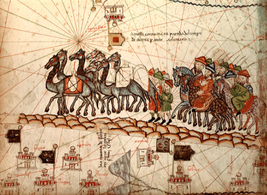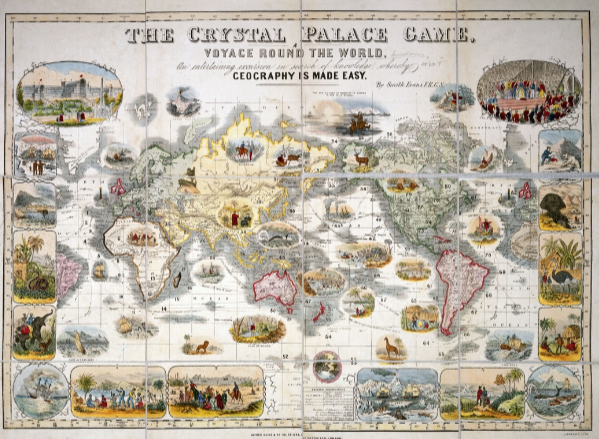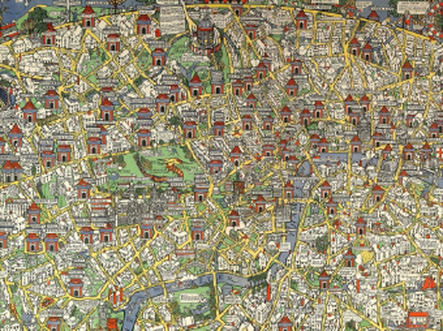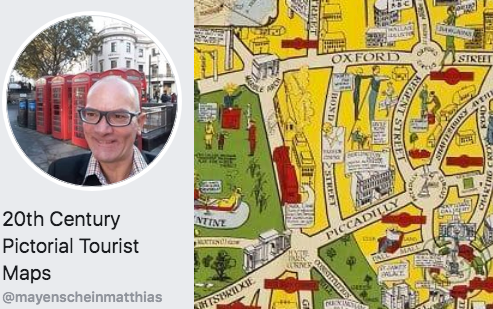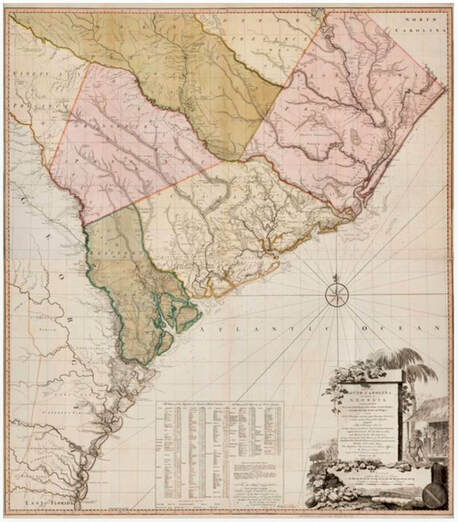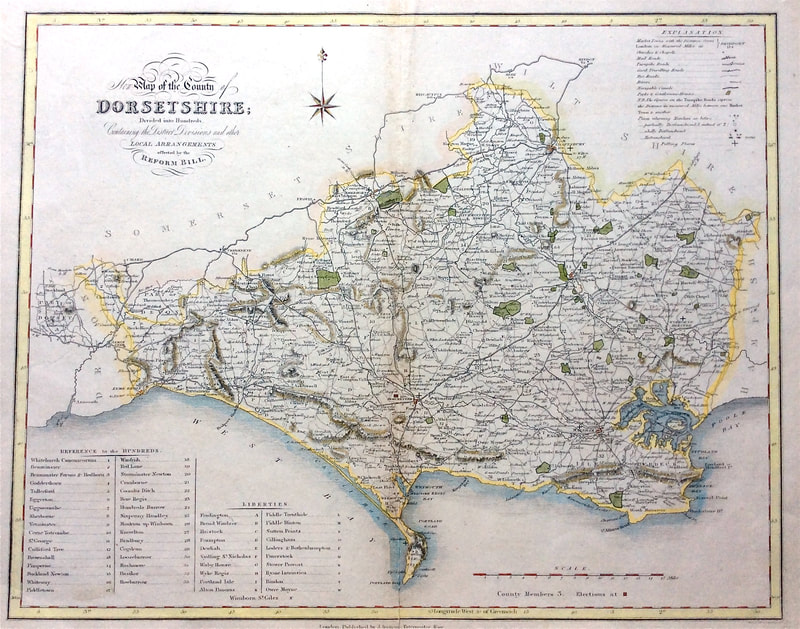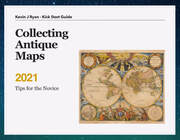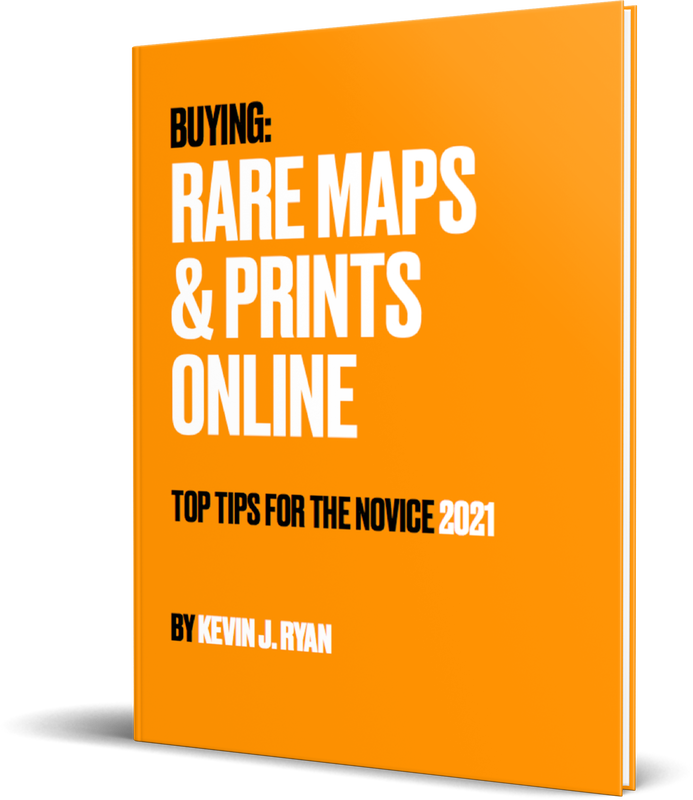|
I've just had the pleasure of reading 'Introduction to Pictorial Maps' by Matthias Mayenschein. If pictorial maps are of interest to you or a passion as they are for me then you must grab a copy of this work. I've put a link at the bottom of this article. The book is a fascinating read. Presenting various maps and mapmakers all in chronological order from Claudius Ptolemy's "Geographia" up to the period of the 1960's then exploring the monumental and pictographic maps. The most striking maps are presented along with good historic background information. Many maps are illustrated, needless to say I can only give you a taste here. Hopefully this will be enough to stimulate your interest and you an go get a copy for yourself and yes the book is currently available FREE! The subjects covered and some examples: 1) Pictorial Maps - What are they? 2) The history of pictorial maps, early beginnings with description of the most striking examples
3) Examples of pictorial maps in the 19th century
4) The history of pictorial maps, 19th and 20th century, in chronological order, with a description of the most striking examples
5) Examples of a Paris pictorial / pictographic map 6) Satire & Caricature Maps in the first half of the 20th Century
7) The history of pictorial maps from 1914 to 1945, exploring the influential work of MacDonald Gill with descriptions of the most striking examples.
8) The history of pictorial maps from 1945 to 1960's, exploring monumental & pictographic maps with description of the most striking examples
William Faden was an English cartographer and a publisher of maps. He was the royal geographer to King George III. He replaced Thomas Jefferys in that role. The title of "geographer to the king" was given to various people in the 18th century, including John Senex, Herman Moll, Emmanuel Bowen and Thomas Jeffreys. If you are a collector of William Faden maps, I'd love to hear from you, please leave a comment below . . . . .
As mentioned before on the blog if you have just a hint of knowledge about the fascinating world of maps you'll appreciate that old maps exist in a vast variety of forms, let alone the many differences in shape, size, subject and appearance. So it's fair to ask what do collectors collect? Here’s a quick list of some of the most popular categories of collecting: 1. By area 2. By mapmaker 3. Of a particular period 4. Displaying particular features 5. By theme 6. Individual significance 7. Appearance alone 8. For investment All the above have a special reason of interest for collectors as varied as the very collectors themselves. Here are two types of map that map enthusiasts love to collect. County Map of Dorsetshire by Ebden & Duncan c1833 County Map of Warwickshire by John Speed c1611
Just One Thing - By Area This is one of the most popular geographic themes for collectors. It allows for a large amount of scope while keeping a limit on the size of a collection and control on cost or the level of investment. You may decide to collect various antique maps of a specific area, like county maps. If you're based in the UK maybe english county maps are of interest to you. Some people collect maps by various mapmakers but only of a specific county. There will be other maps available about the area also, like road maps, town plans, river maps or some with other cartographic features of interest. Collecting rare maps "By Area" is just one thing thats popular with map collectors. These kinds of maps are readily available in the current market. If these types of maps are something you already collect I'd love to hear why they interest you? Please join in the conversation and leave a comment below... |
LEARN ABOUT MAPS Where to Start? The Paper Earliest Maps Whats on the Paper? Rectum & Recto Marketing Devices Why Changing Faces? What is Ornamentation? Why all those lines? The Embellishment Story Illogical Prices Explained A Reference Library CLICK THE BOOK
Get the FREE Guide!
COLLECTING MAPS
Size Matters! Celestial Maps Strip Road Maps Sea Charts On the River of Life Projections The Sea Monsters Thematic Maps Town Plans Buy with Confidence. . .
More Top Tips for the Novice. Click the book to find out more . . .
COLLECTING PRINTS
Views of River Thames
Views of London Shipping & Craft Meet the Fairies Maritime Naval Military Battles Botanical Historic Churches Historic Views of Rome Archives
May 2024
|

